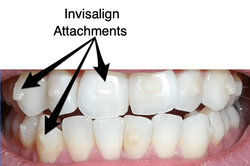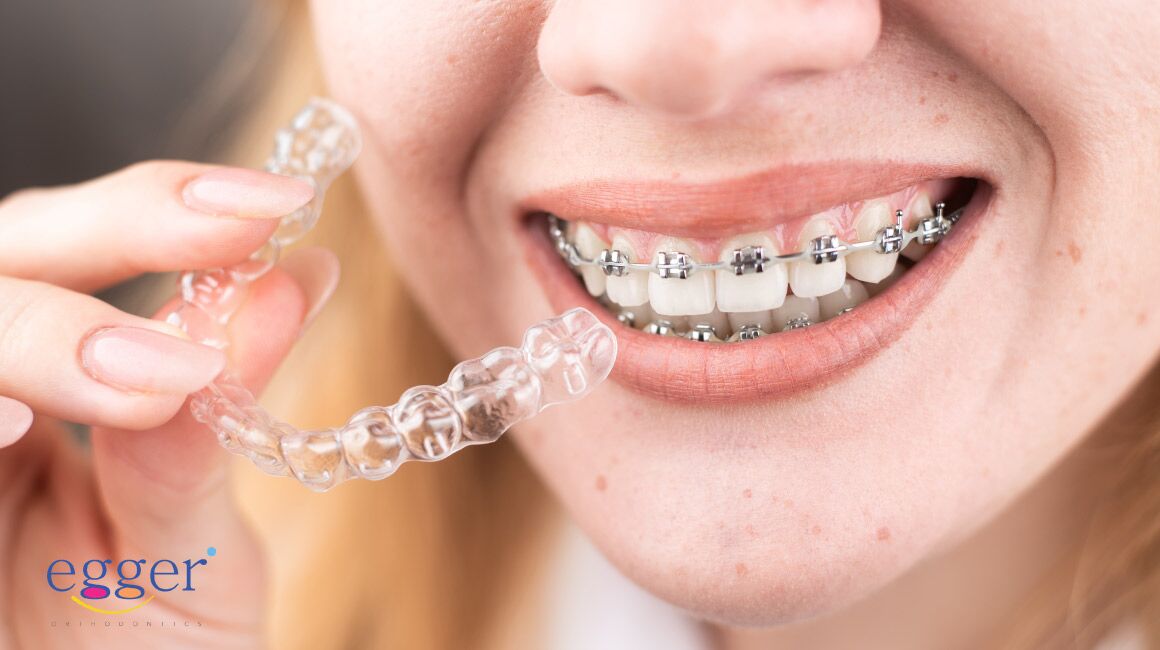Invisalign vs. Standard Dental braces: Which Alternative Is Right for You?
When taking into consideration orthodontic therapy, the selection in between Invisalign and typical dental braces provides several crucial variables that merit careful assessment. Invisalign provides a discreet choice with detachable aligners, while traditional braces offer an extra noticeable yet reliable option for serious misalignment. Each alternative incorporates unique benefits and drawbacks connected to aesthetics, comfort, treatment duration, and cost. Recognizing these nuances is important for making an educated choice that aligns with your individual choices and way of life. The inquiry continues to be: which choice will finest fulfill your orthodontic demands and expectations?
Introduction of Treatment Alternatives

On the other hand, conventional dental braces include metal braces and cords that are bound to the teeth. This approach applies constant stress over time to attain alignment. While efficient for complicated orthodontic problems, typical dental braces require routine check outs for changes and can position difficulties in keeping oral health as a result of the difficulty of cleaning around braces and cords.
Both alternatives have their merits, and the choice commonly depends upon specific dental conditions, way of living choices, and patient compliance. Ultimately, seeking advice from an orthodontic specialist is crucial for figuring out one of the most ideal therapy strategy customized to specific demands. Understanding the nuances of each option can substantially influence the general success of orthodontic therapy.
Aesthetic Considerations
A considerable element influencing the selection in between Invisalign and conventional dental braces is the visual charm each treatment supplies. Invisalign aligners are crafted from clear plastic, making them essentially undetectable when worn.
In contrast, conventional braces include metal braces and cables, which can be more recognizable. While advancements in orthodontic modern technology have actually resulted in the growth of smaller braces and colored elastics, standard braces still keep an even more noticeable account. For some individuals, the presence of braces might discourage them from looking for required therapy.
Eventually, the selection between Invisalign and standard braces may rest on personal choices concerning looks. People that prioritize discernment frequently favor Invisalign, while those who are less concerned concerning visibility might choose conventional dental braces. Understanding the aesthetic ramifications of each alternative is important for making an educated choice that aligns with one's way of life and choices.
Comfort and Convenience

In regards to ease, Invisalign aligners are detachable, allowing individuals to appreciate their favorite foods without restriction and keep optimum oral hygiene. Cleaning and flossing are simplified, as the aligners can be taken out throughout these regimens, whereas conventional braces call for cautious navigating around cables and brackets.
In contrast, typical braces require regular modifications, making them much less practical for those with active schedules. On the whole, the comfort and comfort of Invisalign make it an enticing option for numerous individuals looking for orthodontic therapy.
Treatment Period and Effectiveness
While both Invisalign and traditional braces work in remedying dental misalignments, the period of treatment can vary significantly between both alternatives. Normally, Invisalign therapy can take anywhere from 12 to 18 months, depending upon the recommended you read intricacy of the case. The clear aligners work by slowly changing teeth right into their desired settings, and routine follow-ups with an orthodontist aid ensure development stays on course.
On the other hand, conventional braces commonly call for a longer commitment, normally varying from 18 months to 3 years. This results from their set nature and using wires and brackets, which can be a lot more efficient for intricate instances and extreme misalignments (Invisalign). The treatment efficiency of standard dental braces is well-documented, as they enable specific changes and better control over tooth activity
Ultimately, the option between Invisalign and standard braces may depend upon both the expected therapy duration and the particular dental issues handy. Consulting with an orthodontist is important, as they can provide tailored recommendations based upon specific requirements, making certain the selected technique straightens with preferred results and timeframes.
Cost Comparison and Insurance Options
Price plays a considerable role in the decision-making procedure for people taking into consideration orthodontic treatment, whether choosing Invisalign or conventional braces. Typically, the expense of Invisalign ranges from $3,000 to $8,000, while traditional dental braces typically set you back between $2,000 and $6,000. Elements influencing these costs consist of the intricacy of the situation, the duration of therapy, and geographical place.
Numerous oral insurance plans give partial coverage for orthodontic treatments, yet the specifics can vary commonly. Normally, traditional braces may be extra frequently covered by insurance coverage strategies contrasted to Invisalign, which some insurers categorize as an aesthetic treatment.
In addition, several orthodontic methods use adaptable payment plans, making both treatment choices extra available. Individuals need to make inquiries about potential financing choices and price cuts for upfront repayments. Examining the complete price, consisting of insurance advantages and layaway plan, is crucial for making an informed decision that straightens with both aesthetic preferences and budget considerations.

Final Thought
In recap, the selection between Invisalign and conventional dental braces rests on multiple my latest blog post aspects, consisting of visual choices, comfort, treatment duration, and expense. Invisalign provides a discreet, detachable alternative that promotes dental health and dietary versatility, while conventional braces might be better for intricate dental issues and frequently come at a reduced rate factor. Eventually, assessment with an orthodontist is important to evaluate individual conditions and figure out the most suitable treatment alternative for accomplishing more optimal oral placement.
When thinking about orthodontic treatment, the selection in between Invisalign and conventional braces offers a number of crucial elements that merit cautious assessment.Comparing Invisalign and traditional dental braces discloses distinct treatment options for orthodontic correction.While both Invisalign and typical braces are reliable in remedying dental misalignments, the period of therapy can vary dramatically between the 2 choices.Price plays a considerable role in the decision-making procedure for people thinking about orthodontic treatment, whether choosing for Invisalign or traditional braces.In recap, the choice in between Invisalign and traditional dental braces hinges on several variables, including visual preferences, comfort, therapy duration, and expense.